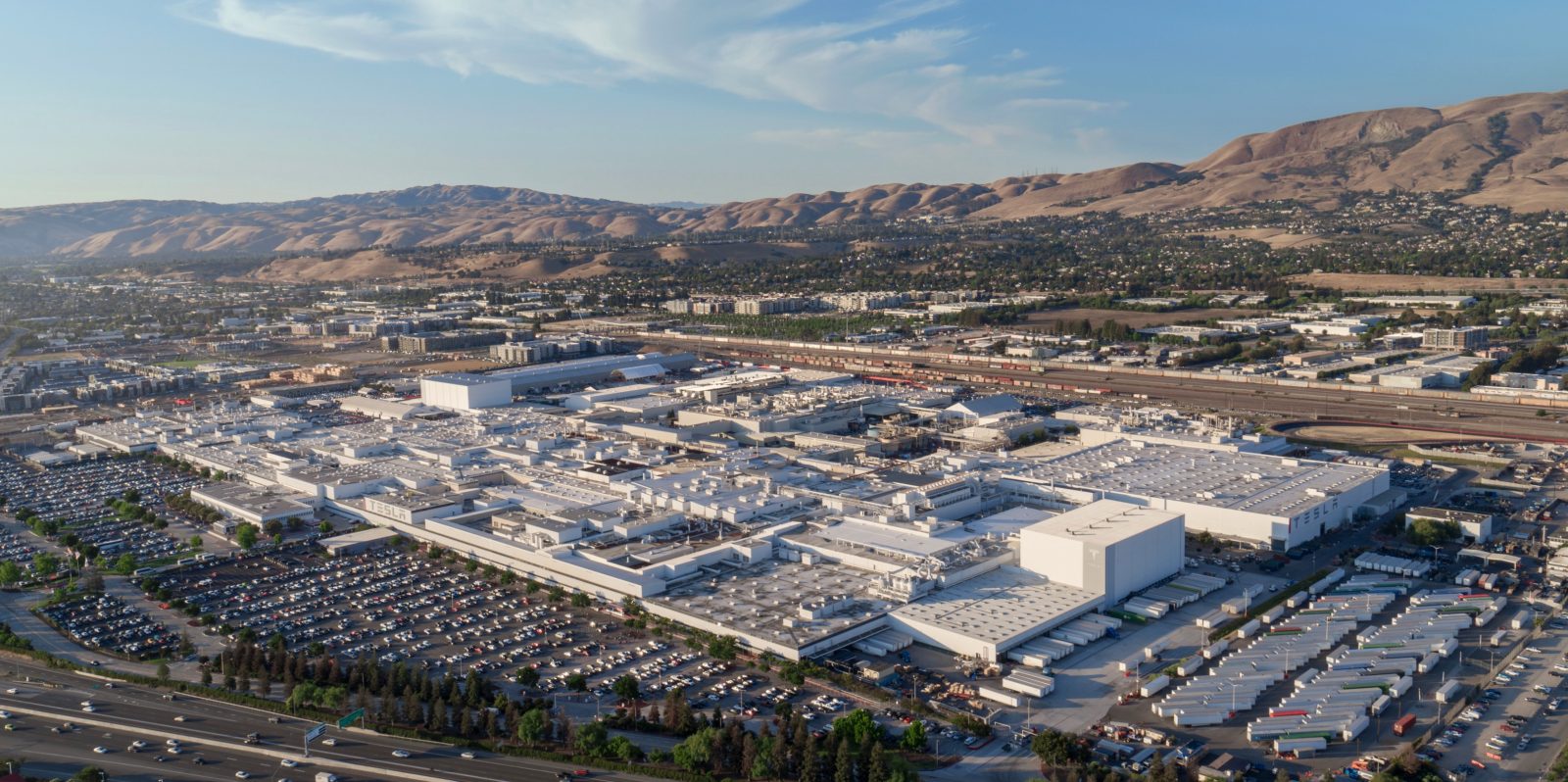
Tesla continues to have the top two best-selling vehicles in California, with the Tesla Model Y extending its No. 1 sales lead over the competition and the Model 3 holding strong at No. 2. But sales from other manufacturers are also increasing, bringing the state to a 23.2% market share for plug-in vehicles: 19.5% BEV and 3.7% PHEV.
Each quarter, the California New Car Dealers Association releases data showing trends in auto sales. These trends have been interesting to watch from an EV perspective, given California’s status as the leader in EV market share in the US.
And that market share continues to grow. In the first quarter, nearly a quarter of California cars had a plug-in, and more than a third of them had some kind of electric motor (hybrids were an additional 11%, making 34.2% of “electrified” vehicles in total).
Also, it’s clear that California is choosing BEVs, over PHEVs and hybrids, as BEV sales growth continues to decouple from hybrids and PHEVs. PHEV and hybrid sales are mostly flat compared to last year, while BEVs continue to rise.
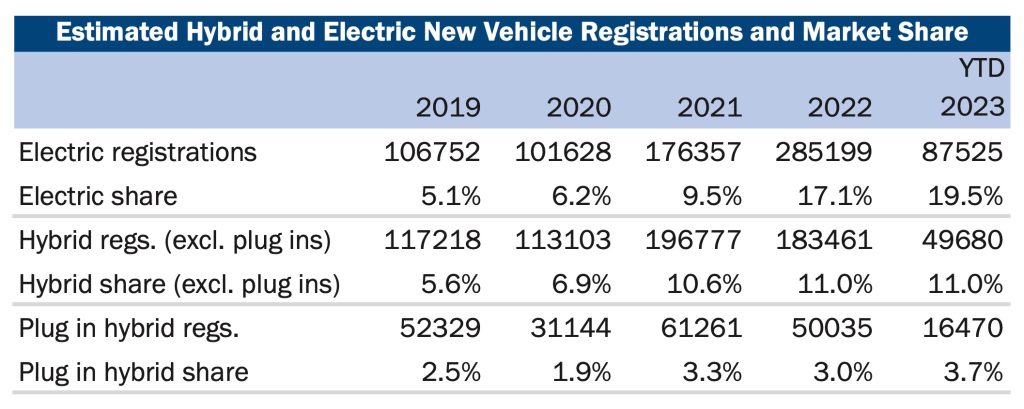
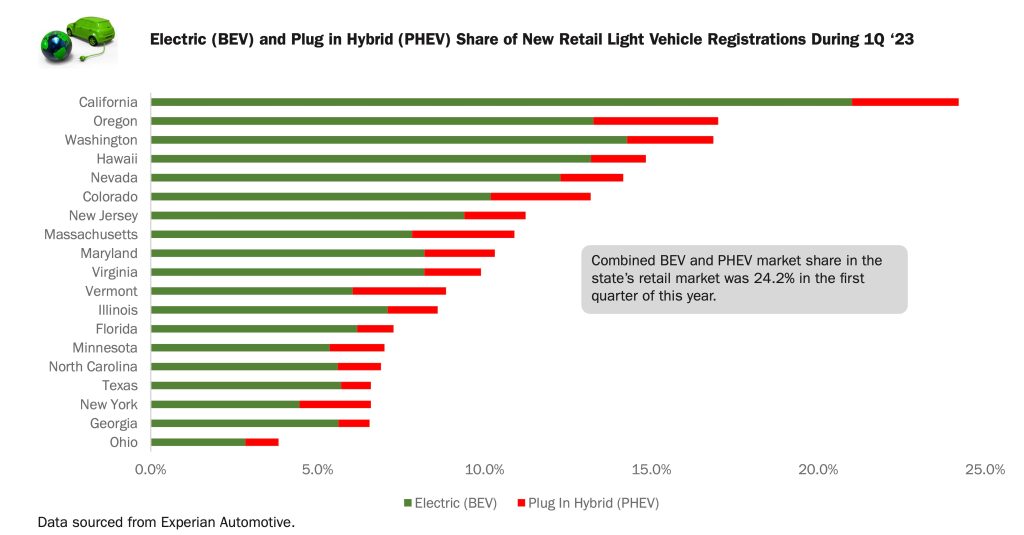
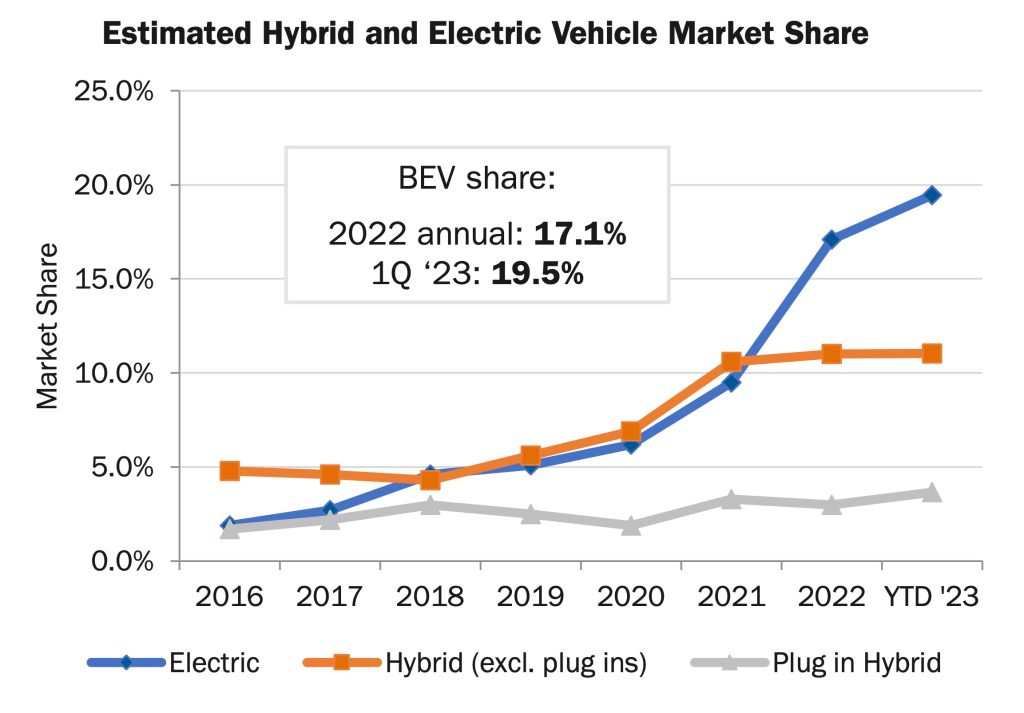
That said, BEV + PHEV share is actually flat compared to Q4 2022, which was 24%.
Over the years, Tesla’s performance in California, the state where the company was founded and grew into the behemoth it is now, has been strong and only getting stronger.
Last year, the Tesla Model 3 outsold the Toyota Camry in California, which had previously been the best-selling car in the state for 28 years in a row. That was especially impressive considering the price of the Model 3 last year, which was significantly higher before this year’s massive price drop.
The latest data shows Tesla continuing its dominance, with the top-selling passenger car and light truck in the state. The Tesla Model Y is the most popular vehicle in the state, selling 31,940 units in the first quarter, followed by the Model 3 with 17,715 units.

Right behind the two Tesla vehicles are the Toyota Camry and RAV4 and the Ford F-Series. They’re interesting because all three are central: the F-Series has been America’s best-selling vehicle for decades, the RAV4 was for a time the best-selling SUV in the U.S. and the world, and the Camry had been the best-selling car from California also for decades.
And the Model Y expanded its domain significantly. Last year, it held 7.6% of the light truck market, selling 1.4 times as many vehicles as the second-placed RAV4. So far this year, the Model Y has 10.3 percent of the popular light truck segment and has sold a whopping 2.4 times more units than the second-place RAV4.
Things are a little closer to passenger cars, with the Camry holding pretty steady at 10.0% (up from 10.7%) and the Model 3 dropping slightly to 12.7% (up from 15 % of last year). So the Model 3 has maintained its position, but it’s getting a little closer than it was. This could be due to the upcoming Model 3 “Project Highland” update.
Overall, Tesla remains the #2 best-selling brand behind Toyota, as Tesla sells in fewer segments than Toyota. But Toyota’s full-year market share was 17.3% in 2022 and has fallen to 15.2% in the first quarter of 2023. Tesla’s was 11.2% in 2022 and so far has seen a small increase to 11.8% by 2023. If this pace continues (and Toyota continues to make no EVs), we could see Tesla overtake Toyota as the best-selling company in the next few years or two

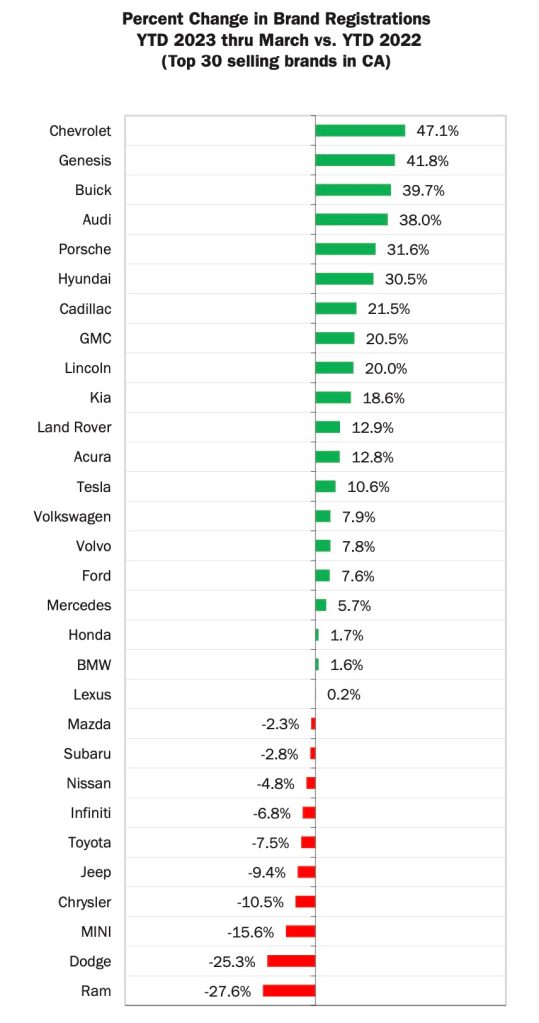
Last year, we also saw virtually every brand have declining sales, with the only notable exceptions being Tesla (+54%) and Genesis (+26%), largely due to an overall downturn in the automotive industry. automobile related to pandemic supply challenges. But compared to the first quarter of last year, the first quarter of 2023 has seen sales increase for most brands, with Tesla in the middle of the pack, with a sales increase of just 10.6% .
The Electrek dam
The reason this data is interesting is because California is not so much an outlier in EV sales as a leader. The state tends to adopt and set trends ahead of other states, and can be seen as an indicator of where the rest of the country will end up. Many style and technology trends start in California and then filter elsewhere, and electric vehicles have proven to be one of them.
The growth of the electric vehicle market is nothing new to Electrek readers, so it’s not like this new data is revolutionary or anything, but it can help us keep an eye on where the market is trending .
That said, while EV market share is growing compared to last year, it’s interesting to note that they aren’t really growing compared to last quarter. This could be due to Tesla’s famous year-end sales push, which tends to drag down EV sales. Or it could be because supply challenges hit the entire industry last year, depressing sales overall, while Tesla was comparatively less affected by these challenges and was able to boost EV sales with its production relatively unaffected.
Or it could have to do with the growing chaos surrounding Tesla CEO Elon Musk. Anecdotally, as a Californian who knows a lot of young people interested in buying electric cars, a lot of people are turning off the brand because of its recent behavior.
But also, the first quarter didn’t really capture the extent of Tesla’s price cuts, which were meant to stimulate demand that has been a problem for Tesla of late. So we may see more growth in the second quarter, as we still expect California to come out this year with a good EV market share of about 25%, if the trends continue.
FTC: We use automatic affiliate links to earn income. Month.


